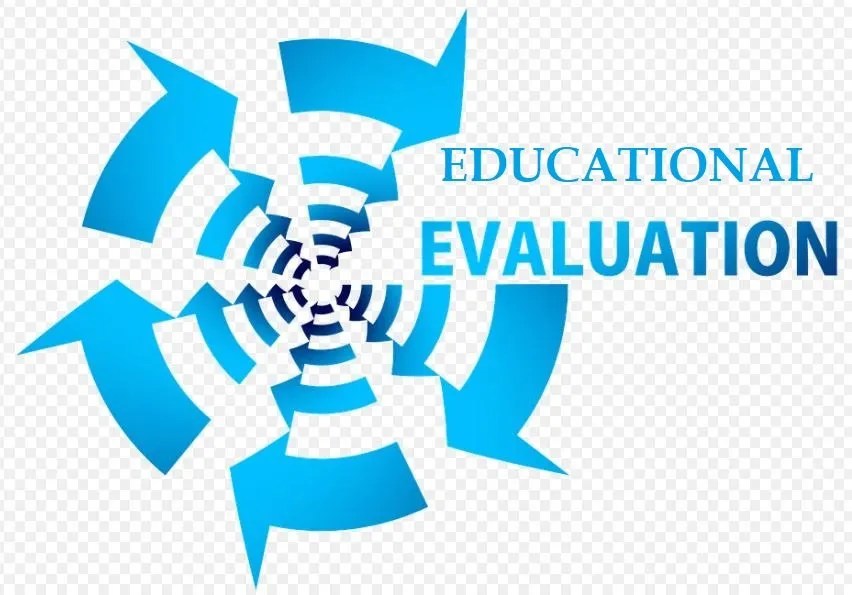
Let’s start with the definition of evaluation in this article before we delve into evaluation in Education, the meaning as well as types and its importance.
What exactly is evaluation?
Evaluation is a procedure that reviews a program critically. It is a process that involves careful gathering and evaluating of data on the actions, features, and consequences of a program. Its objective is to evaluate programs, improve program effectiveness, and influence programming decisions.
The efficacy of program interventions is assessed through educational evaluation. These often address the learning, such as reading; emotional, behavioral, and social development, such as anti-bullying initiatives; or wider subjects, such as whole-school system improvements such as inclusive education. Within the research community, debates have raged regarding methodology, specifically the use of qualitative approaches in evaluating program efficacy vs quantitative ones. There has also been significant political participation, with certain governments adopting stances on the sort of evidence necessary for assessment studies, with a focus on randomized controlled trials in particular (RCTs).
The initial goal of program assessment is to determine the effectiveness of the intervention. This can be done on a small basis, such as a school studying the implementation of a new reading scheme, but it can also be done on a big scale, at the district, school, state (local authority ), or national level. The availability of national or state data collections, such as those from the United Kingdom. The Government’s National Pupil Database and its student-level School Census provide opportunities for large-scale evaluations of educational interventions, such as curricular reforms or the differential development of types of kids (e.g., the relationship between identification of special educational needs and ethnicity). However, the importance of evaluating both the effectiveness of the program itself and its implementation is becoming increasingly recognized.
Other definitions of Evaluation by other authors;
“The technique of obtaining and assessing information changes in the conduct of all children as they advance through school,” Hanna says.
According to Muffat, “evaluation is a continual process that is concerned with more than the official academic accomplishment of students.” It is viewed in terms of the individual’s growth in terms of desired behavioral change in connection to his feelings, thoughts, and actions.”
Evaluation is a crucial issue in both the first and second years of B.Ed. Every B.Ed. student should comprehend the notion of evaluation and assessment.
Types of Evaluation in Education
- Formative Evaluation
- Summative Evaluation
- Prognostic Evaluation
- Diagnostic Evaluation
- Norm Referenced Evaluation
- Criterion Referenced Evaluation
- Quantitative Evaluation
- Formative evaluation
We would be explaining each of these types of evaluation in education.
1. Formative Evaluation
- This form of evaluation takes place during the instructional process. Its goal is to offer students and teachers with continual feedback.
- This aids in making modifications to the instruction process as needed. It considers smaller and autonomous curricular sections, and pupils are ultimately assessed through assessments.
- It is assessing the kids’ understanding and which part of their work needs more work. A teacher can assess their pupils while educating them on a class or a lesson or after the topic has been completed to see whether or not modifications in teaching approach are required.
- It is really beneficial to make modifications or timely corrections in pupils and teaching style.
2. Summative Evaluation
- Summative evaluation occurs at the end of the school year. It assesses the success of objectives and changes in a student’s general personality at the end of the session.
- Summative evaluations address a wide range of aspects of learning. It considers formative assessment ratings and student tests after course completion to provide final grades and comments to students.
- Summative evaluation is used to grade students.
3. Prognostic Evaluation
- Prognostic evaluations are used to estimate and anticipate a person’s future career.
- A prognostic evaluation adds a new dimension to the discoveries of an assessment with analysis of talents and potentials: the concerned person’s future growth, as well as the necessary circumstances, timeline, and constraints.
4. Diagnostic Evaluation
- As the phrase implies, diagnosis is the process of determining the root cause of a problem. During this examination, a teacher attempts to diagnose each student on many characteristics in order to determine the caliber of pupils.
- A diagnostic assessment is a type of pre-evaluation in which teachers assess students’ strengths, weaknesses, knowledge, and abilities prior to the start of the teaching learning process.
- It necessitates specifically designed diagnostic tests as well as several additional observational procedures.
- It is useful in developing the course and curriculum based on the learner’s ability.
5. Norm Referenced Evaluation
- This type of assessment is centered on evaluating students’ relative performance, either by comparing the outputs of individual learners within the group being evaluated or by juxtaposing their performance to that of others of comparable age, experience, and background.
- It influences the placement of pupils inside the group.
6. Criterion Referenced Evaluation
- Criterion Reference Evaluation explains a person’s performance in relation to a predetermined performance benchmark.
- It describes a student’s performance accuracy, or how well the individual performs in relation to a given standard.
- In other words, it’s like comparing a student’s performance to a predetermined benchmark.
7. Quantitative Evaluation
Quantitative assessments employ scientific instruments and measures. The outcomes can be tallied or measured.
Quantitative Evaluation Techniques or Tools;
- Oral
- Written
- Performance evaluation
8. Formative Evaluation
- Qualitative observations, which are more subjective than qualitative evaluation, are described in science as any observation made utilizing the five senses.
- It entails value assessment.
9. Qualitative Evaluation Techniques or Tools
- Cumulative Records
- The school keeps such statistics to demonstrate pupils’ overall improvement.
10. Anecdotal evidence
These records preserve descriptions of noteworthy events or student efforts.
11. Observation
This is the most popular method of qualitative student assessment. This is the only method for assessing classroom interaction.
12. Checklist
Checklists specify precise criteria and allow instructors and students to collect data and make judgments about what pupils know and can perform in connection to the outcomes. They provide systematic methods for gathering data on certain behaviors, knowledge, and abilities.
Difference Between Evaluation and Assessment
| Evaluation | Assessment |
| Improves learning quality | Judges learning level |
| Ungraded | Graded |
| Provides feedback | Shows shortfalls |
| Process-oriented | Product-oriented |
| Ongoing process | Provide closure |
Functions and Importance of Evaluation in Education
The primary goal of the teaching, learning process is to enable the student to obtain the desired learning outcomes. The learning objectives are established during this phase, and then the learning progress is reviewed on a regular basis using tests and other assessment tools.
The evaluation process’s role may be described as follows:
- Evaluation aids in the preparation of instructional objectives: The evaluation results may be used to fix the learning goals expected from the classroom discussion.
- What kind of information and comprehension should the learner gain?
- What skill should they demonstrate?
- What kind of interest and attitude should they cultivate?
Only when we determine the instructional objectives and communicate them clearly in terms of expected learning outcomes will this be achievable. Only a thorough evaluation method allows us to create a set of ideal instructional objectives.
- The evaluation method aids in analyzing the learner’s requirements: It is critical to understand the needs of the learners during the teaching-learning process. The instructor must be aware of the knowledge and abilities that the pupils must learn.
Evaluation aids in delivering feedback to students: An evaluation procedure assists the instructor in determining the students’ learning issues. It contributes to the improvement of many school procedures. It also assures proper follow-up service.
Evaluation aids in the preparation of program materials: A continuous succession of learning sequences is referred to as programmed instruction. First, a limited quantity of teaching content is offered, followed by a test to respond to the instructional material. The following feedback is given based on the accuracy of the response given. Thus, programmed learning is impossible without an adequate evaluation method.
Evaluation aids in curriculum development:
Curriculum creation is an essential component of the educational process. Data from evaluations allow for curriculum creation, determining the efficacy of new methods, and identifying areas that require change. The evaluation also aids in determining the effectiveness of an existing curriculum. Thus, assessment data aids in the development of new curriculum as well as the evaluation of existing curriculum.
- Evaluation aids in communicating the development of students to their parents: A structured evaluation approach gives an objective and complete view of each student’s development. This comprehensive nature of the assessment procedure enables the instructor to report to the parents on the pupil’s overall growth. This sort of objective information about the student serves as the foundation for the most successful collaboration between parents and instructors.
7. Evaluation data are quite valuable in advice and counseling: Educational, vocational, and personal guidance all require evaluation methods. To help students address difficulties in the educational, vocational, and personal domains, the counselor must have an objective understanding of the students’ talents, interests, attitudes, and other personal traits. An successful assessment system aids in the formation of a complete image of the student, which leads to appropriate guiding and counseling.
8. Evaluation data aids in good school administration: Evaluation data assists administrators in determining the amount to which the school’s objectives are met, determining the strengths and weaknesses of the curriculum, and planning special school programs.
- Evaluation data are useful in school research: Research is required to improve the effectiveness of the school program. Data from evaluations aid in research fields such as comparative studies of different curricula, efficacy of different approaches, effectiveness of different organizational designs, and so on.
Principles of Evaluation
The following concepts guide evaluation:
- Continuity principle: Evaluation is a continual process that continues as long as the student is involved in education. Evaluation is an important part of the teaching-learning process. Whatever the student learns should be examined on a daily basis. Only then will the student have a greater mastery of the language.
- The comprehensiveness principle: states that we must evaluate all parts of the learner’s personality. It is concerned with the child’s whole development.
- The principle of Objectives: states that evaluation should always be based on educational objectives. It should aid in determining where there is a need for revamping and stopping the learner’s behavior.
- Child-Centeredness Principle: The child is at the center of the evaluation process. The child’s conduct is the focal point for evaluation. It assists a teacher in determining a child’s grasping ability and the effectiveness of teaching content.
- The principle of broadness: states that evaluation should be wide enough to encompass all areas of life.
- Principle of Application: The child may learn many things during the teaching and learning process. However, they may be ineffective in his daily life. If he can’t utilize it, it’s pointless to look for it. It can be determined by assessment. The evaluation determines if a student is better able to use his knowledge and understanding in various circumstances in order to thrive in life.
8 Evaluation characteristics in education
- Process what is ongoing: Evaluation is a never-ending process. It co-leads with the teaching-learning process.
- Comprehensive: Evaluation is comprehensive because it encompasses everything that can be reviewed.
- Child-Centered: Evaluation is a child-centered technique that emphasizes the learning process rather than the teaching process.
- Remedial: Although evaluation remarks on the outcome, it is not a remedy. The purpose of an evaluation is to correct problems.
- Cooperative Process: Evaluation is a collaborative process that involves students, instructors, parents, and peer groups.
- Teaching Approaches: The effectiveness of various teaching methods is assessed.
- Common Practice: Evaluation is a typical technique for the optimal mental and physical development of the kid.
- Multiple Aspects: It is concerned with pupils’ whole personalities.
In summary, Evidence of efficacy, often from random controlled trials, and the effectiveness of project planning is required for the evaluation of educational programs. Program evaluations must prove that the program can perform under ideal controlled situations and that it will work when carried out on a broad scale in community settings to order to give valuable data to support policy. To address these many dimensions of effectiveness, evaluation benefits from a combined approaches strategic plan.




